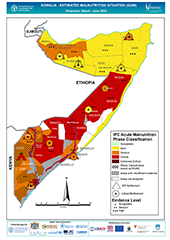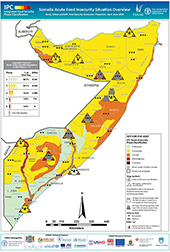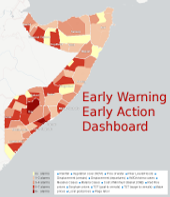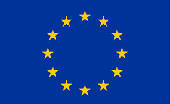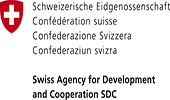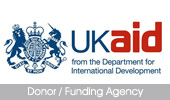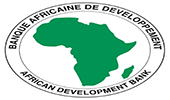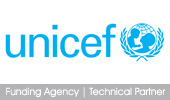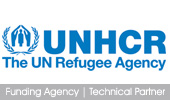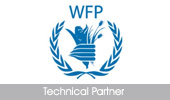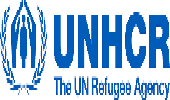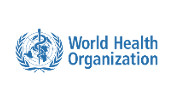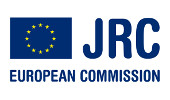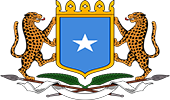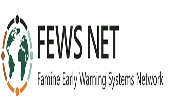FSNAU In Focus
-
Climate Data Update, March 2013
April 19, 2013Read More ....
The Gu rains (April - June) commenced earlier (2nd and 3rd dekads of March) than usual in many parts of the country. Most stations in northwestern and northeastern parts of the country recorded above average rainfall compared to the long term average values for the month of March (Map 1 and Table 1). Field reports also confirm an early start of rainfall activities in most livelihoods. Satellite derived (TAMSAT) Rainfall Estimates (RFE) also indicate rainfall occurrence in March with a gradual increase from the third dekad of March (Maps 2-5). Torrential rains during the 3rd dekad of March...
-
Climate Data Update February, 2013
March 19, 2013Read More ....
During the month of February 2013, the harsh Jilaal dry season (January – March) continued to prevail throughout the country, marked by dry weather conditions with strong winds and high evaporation rates. No rainfall was recorded in all the rain-gauge stations nationwide. This continued dryness is further confirmed by the field reports, which also indicated light showers in Janale district in the Lower Shabelle region.
The satellite derived Rainfall Estimates (RFE), further confirm the prevailing dry weather conditions across the country and... -
Market Data Update February, 2013
March 19, 2013Read More ....
Inflation: Since the beginning of the year, Consumer Price Index (CPI) declined slightly in the South, accelerated marginally in the Central and remained relatively stable in the North. Annual inflation reduced in South-Central but increased somewhat in the Northern zones. Compared to the base period (March 2007), the minimum cost of living is elevated both in Somali Shilling (SoSh) as well as Somaliland Shilling (SlSh) areas.
Exchange rate: The SoSh sustained upward trend on the US Dollar (...
-
FSNAU Food Security Technical Series Report Post Deyr 2012/13
March 1, 2013Read More ....
While the number of people in need of humanitarian assistance in Somalia has halved to 1.05 million since August 2012, malnutrition rates remain among the highest in the world, according to the latest data released today. Humanitarian assistance to protect livelihoods, reduce acute malnutrition, and help the most food insecure populations is needed over the next six months. The underlying vulnerability of poor households also requires action to address the causes and reduce the risks of food and nutrition insecurity by increasing the resilience of existing...
-
FSNAU Technical Series Report Post Deyr 2012/13 Nutrition Analysis
February 28, 2013Read More ....
Nutrition Situation Overview
Integrated analysis of core nutrition indicators for the Deyr 2012/13 reflects improvements in the overall nutrition situation as compared to the Gu 2012 six months earlier (Maps 1 and 2). This is mostly a result of improved access to household food and disease outbreak control. Recent improvements in food security are attributed to continued humanitarian interventions, improved own production (crops, milk), increased incomes (farm labour, livestock sales at high prices) and...
-
Climate Data Update January, 2013
February 22, 2013Read More ....
During the month of January, the Jilaal dry season prevailed in the country, characterized with dry winds and relatively hot weather conditions. No rainfall was recorded in the rain-gauge stations countrywide, which is a normal occurrence at this time of the year (Map 1).
Satellite derived Rainfall Estimates (RFE) (Map 2-5) also indicate prevailing dry weather conditions across the country apart from Northwest (W.Galbeed and Togdheer regions) where light Hays rains precipitated in the 3rd dekad of January.
The Normalized Difference Vegetation Index (NDVI) for... -
Market Data Update January, 2013
February 22, 2013Read More ....
• Inflation: The January Consumer Price Index (CPI) declined slightly in South-Central while remaining relatively stable in all other regions of the North. Annual inflation reduced in Somali shilling (SoSh) areas but increased somewhat in the regions using Somaliland shilling (SlSh). The minimum cost of living is significantly higher in SoSh zones whereas it is moderately elevated in SlSh area when compared to the base period (March 2007).
• Exchange rate between SoSh and the US Dollar (USD) gained... -
Somalia Post Deyr 2012/13 Food Security and Nutrition Outlook
February 12, 2013Read More ....
KEY MESSAGES
• As a result of positive impact of the good Deyr rains on livestock and crop performance and continued humanitarian assistance, the number of people in Crisis and Emergency (IPC Phases 3 and 4) has halved to 1.05 million. Even so, malnutrition rates in Somalia remain among the highest in the world, according to surveys conducted in October - December 2012. Humanitarian assistance to protect livelihoods, reduce acute malnutrition, and help the most food insecure populations meet their food needs is still necessary.
•... -
Seasonal Climate Update, February 5, 2013
February 5, 2013Read More ....
Rainfall
Deyr 2012 rains started as early as in the third dekad of September in most of central and southern regions. The rains advanced to the rest of the areas in October. FSNAU field reports indicated average to above average rains in all livelihoods of Bari, Hiran, Middle Shabelle, Bay and Bakool. Nevertheless, depressed rains were reported in north of Gedo, coastal areas of Lower Shabelle and Lower Juba and parts of Guban, Sool plateau and Nugal valley livelihoods.
In October and November, river flooding mainly caused by deposition of... -
Somalia’s food insecurity eases but acute malnutrition remains high
February 1, 2013Read More ....
1 February 2013, Nairobi/Washington – While the number of people in need of humanitarian assistance in Somalia has halved to 1.05 million since August 2012, malnutrition rates remain among the highest in the world, according to the latest data released today. Humanitarian assistance to protect livelihoods, reduce acute malnutrition, and help the most food insecure populations is needed over the next six months. The underlying vulnerability of poor households also requires actions to address the causes and reduce the risks of food and nutrition insecurity by increasing...
